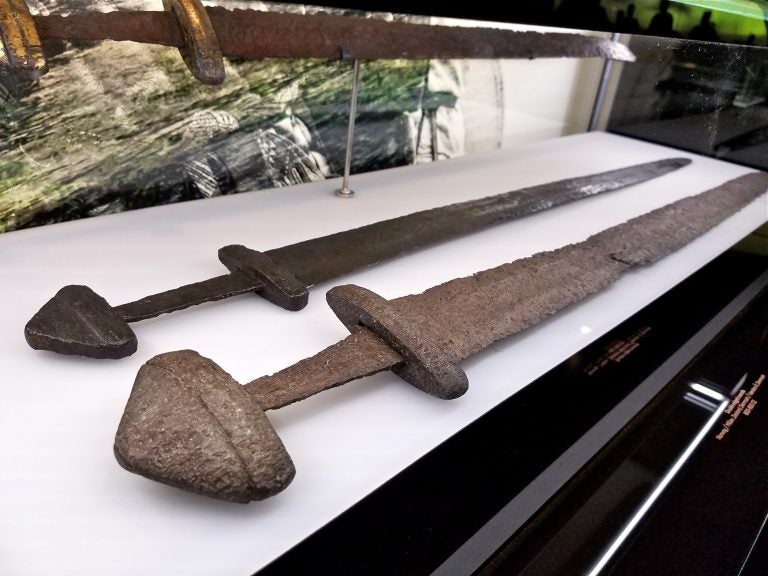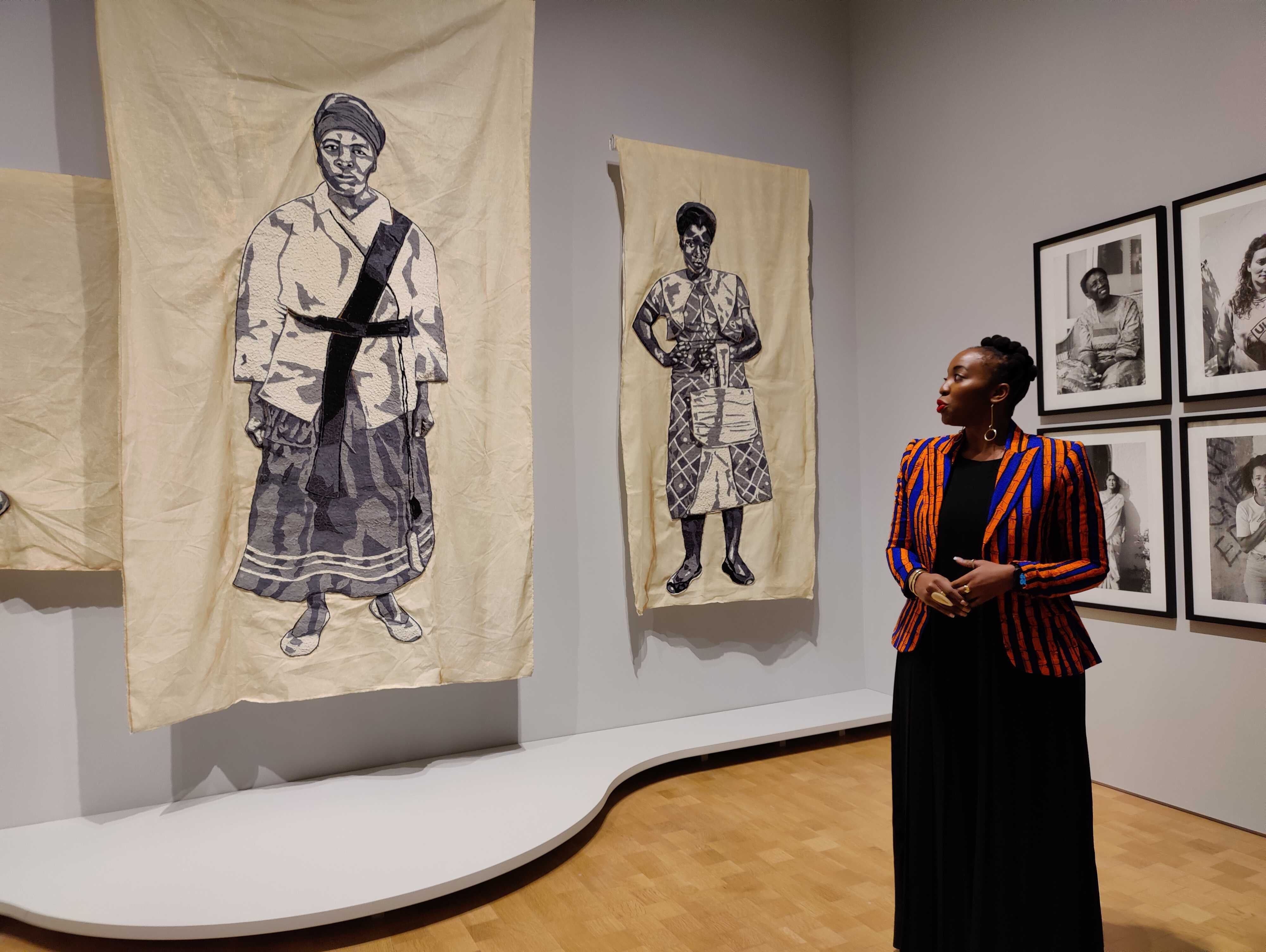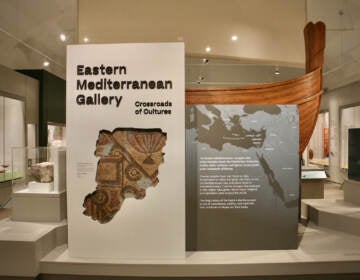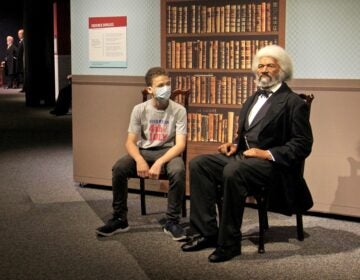Viking invasion at the Franklin Institute
New Vikings exhibition at the Franklin Institute focuses on the savagery of the ancient Scandinavians.

Swords are exhibited at the Franklin Institute's "Vikings: Beyond the Legend." (Peter Crimmins/WHYY)
A 122-foot Viking ship has been recreated as a steel skeleton with parts from the original, 1,000-year-old hull that was found at the bottom of the Roskilde fjord in Denmark. It now sits within the Franklin Institute in Philadelphia.
It’s the centerpiece of the largest exhibition about Vikings to tour North America since … well, since the Vikings.
The Vikings thrived on the water, and their single greatest achievement may have been shipbuilding. Their sailing ships were designed to be strong enough to cross wide oceans, while simultaneously light and nimble enough to maneuver through shallow rivers.
Their trade routes stretched from Greenland in the Atlantic Ocean to the heart of Russia via inland rivers.
That aquatic agility also made them excellent warriors.
“It was important for the Vikings to hit and run. To move fast,” said Peter Pentz, curator at the National Museum of Denmark, whence comes “Vikings: Beyond the Legend.”
“Sailing up to the coast, jump in the water, run up, burn, steal, back into the ships, and be on their way.”

The 16,000-square-foot exhibition, with 600 artifacts, barely squeezes in to the Franklin Institute. The bow and stern of the Roskilde ship practically scrape the walls of the Mandell Center, leaving little room for anything else. The exhibition spreads into the adjacent Karabots Pavilion.
The Franklin Institute, with the expansion of its exhibition spaces a few years ago, is one of the few science centers in the country that could host “Vikings” in its entirety.
The Viking era extends from the late 8th century to roughly 1,100. The early Scandinavians were an oral culture, leaving behind few writings. The first known record of the Vikings is from 793, when a monk in a northern England monastery wrote an account of a raid by a “savage race of Northmen.”
The Vikings did not invade as armies, but more like marauding militias. They gave their swords personalities, wrought from their history of kills. Viking women wore jewelry made from pieces of weaponry.
“The violence, and what we associate with male Vikings, was just as apparent for the women,” said Pentz. “They were just as violently minded as their husbands.”
The Vikings developed a rich, animal-based spiritual culture and beautifully designed metalwork (although, curiously, really ugly pottery). They were one of the last European holdouts against Christianity, standing firm in the face of strident missionaries from the continent. Their mythology of gods Odin, Thor, Loki, and Freya is still popular today.
Nevertheless, Pentz said, theirs was a culture of war to a degree that may seem alien to people today.
“I must say, I don’t like these people,” said Pentz, who oversees his museum’s Viking collection. “They are differently minded in a way I cannot connect with. That’s not a bad thing. It’s part of this exhibition to say that we can be proud of these people, but know they – in a modern sense – behaved wrong.”
The way Vikings have been portrayed in both scholarship and popular culture has been cleaned up to better fit contemporary sensibilities, he said.
Take the 2013 HBO series, “Vikings,” which Pentz said did a great job of portraying the time and place of the Vikings, not so much the inner life of the people.
“What they didn’t catch, I think, was the Viking thinking,” he said. “They put modern people in Viking clothes, acting out feelings like we would have, not what the Vikings would have ever felt.”
That also extends to archaeological scholarship — particularly after the rise and fall of Germany’s Nazi party, which adopted many Viking symbols for its military regalia. For a scholar to spend resources researching an ancient people symbolically associated with 20th century genocide was frowned upon.
“The notion of a superior race of northern Europe was created. Viking research suffered a lot from this,” he said. “After 1945, it took decades to recover from this contamination. The Viking warrior was more or less banned. We couldn’t research into this. It was dirty stuff.”
“Vikings: Beyond the Legend” is intended to be a corrective, putting their sometimes troubling brutality to the fore.
WHYY is your source for fact-based, in-depth journalism and information. As a nonprofit organization, we rely on financial support from readers like you. Please give today.





